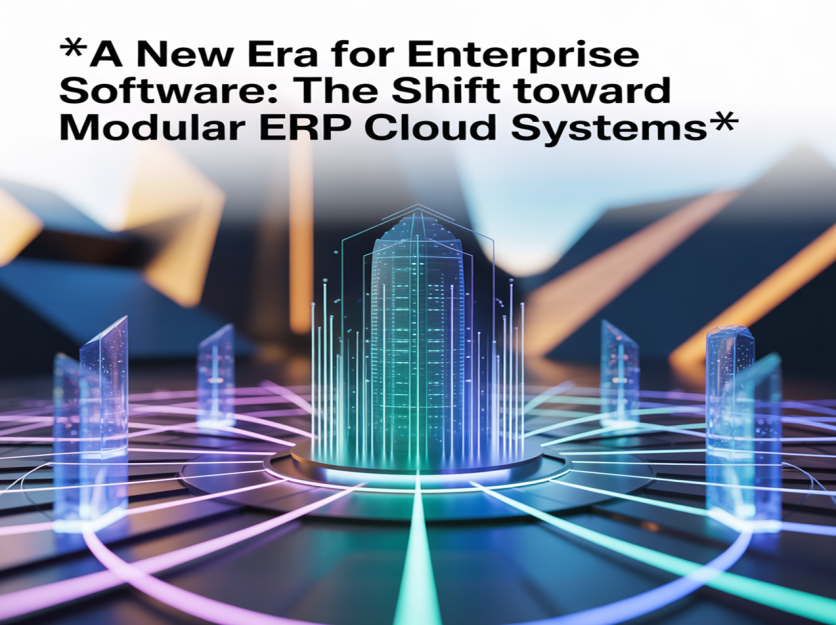
Darshini Basavapura Jayaprakash, an independent researcher, explores how enterprise software is entering a new era of modernization. With deep expertise in digital transformation and system architecture, the author sheds light on the innovations redefining how organizations approach business-critical software.
Breaking Away from Legacy Limitations
Traditional enterprise systems were built as monolithic structures, rigid frameworks with tightly bound components that restricted integration and adaptability. These designs often created vendor dependencies, complex upgrade paths, and escalating maintenance costs. Today, organizations are moving away from these limitations, recognizing that agility and scalability are essential in a cloud-driven world.
Modular Thinking as a Core Principle
The shift toward modular architecture marks a fundamental change. Instead of monolithic customization, organizations now embrace loosely coupled, autonomous components. Each module evolves independently, making systems easier to update, maintain, and scale. This decoupling reduces technical debt, simplifies upgrades, and fosters a more resilient foundation for long-term growth.
Microservices: Building in Pieces
A key innovation driving this transformation is the adoption of microservices and service-oriented design. Business processes are decomposed into discrete, manageable services that can be developed, deployed, and scaled independently. This method strengthens system resilience, ensures higher availability, and allows organizations to adjust to evolving demands without disrupting the entire infrastructure.
The Power of Containerization
Cloud-native deployment strategies, particularly containerization, add another layer of efficiency. Containers support rapid initialization, automated failover, and seamless scaling, all while optimizing resource utilization. This approach allows businesses to deploy updates with minimal disruption and achieve higher infrastructure efficiency compared to traditional virtualized environments.
API-First Development: Building Bridges
Modern enterprises are also adopting an API-first approach, prioritizing robust interface design to ensure seamless integration between custom applications and core ERP systems. APIs provide a stable foundation for extending functionality, supporting scalability, and reducing integration complexities. This methodology enhances developer productivity and ensures systems remain adaptable to future requirements.
Preserving User Experience Through Abstraction
User interface abstraction techniques are increasingly critical during migration. By separating the interface layer from underlying logic and data structures, organizations can preserve familiar workflows while transitioning to advanced platforms. This reduces resistance to change, minimizes retraining needs, and ensures continuity of operations during major system overhauls.
Democratizing Development with Low-Code Tools
Low-code platforms are reshaping how businesses extend ERP systems. These tools empower non-technical users to build and adapt functionalities quickly, reducing dependence on IT teams. The result is faster delivery of custom solutions, improved responsiveness to business needs, and reduced operational bottlenecks in innovation cycles.
Smarter Integration with Middleware
Modern integration middleware ensures smooth data synchronization, real-time communication, and consistent performance across distributed environments. With pre-built connectors and advanced monitoring tools, middleware strengthens system reliability and enhances visibility, critical factors for enterprises managing complex ecosystems.
Agility, Scalability, and Collaboration
The innovations in modular design and cloud deployment are yielding clear outcomes: faster update cycles, improved scalability, and enhanced collaboration across teams. Independent scaling of components ensures systems perform reliably under peak loads, while well-defined boundaries between services foster more effective teamwork across distributed environments.
Preparing for the Future
Perhaps the most significant advantage of these innovations lies in their future-readiness. Modular ERP systems provide a foundation for integrating artificial intelligence, machine learning, and advanced analytics. This adaptability ensures that organizations can embrace emerging technologies with reduced costs and minimal disruption, keeping them competitive in dynamic markets.
In conclusion, the innovations described highlight a transformative journey in enterprise technology, one that emphasizes agility, flexibility, and long-term sustainability. By embracing modularity, microservices, containerization, and API-driven development, businesses position themselves to thrive in a rapidly evolving digital landscape. As Darshini Basavapura Jayaprakash notes, organizations adopting these principles will be better prepared to integrate future technologies while maintaining resilience and competitive strength.
ⓒ 2025 TECHTIMES.com All rights reserved. Do not reproduce without permission.




